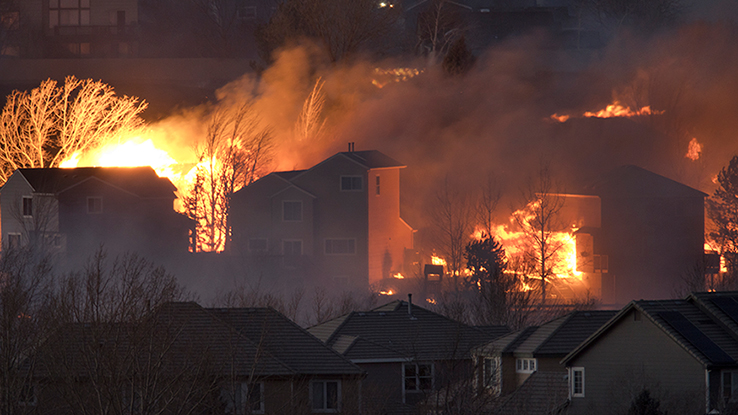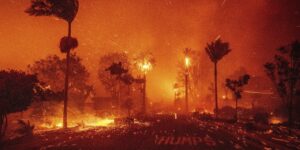
As wildfires and other natural catastrophes grow in frequency and severity, so does the value of data ecosystems to help insurers gain a comprehensive view of property risk, from address-level exposure to granular, up-to-date reconstruction cost estimates.
A new Verisk case study breaks down the data suite used to evaluate the aftermath of the recent Marshall Fire in Boulder County, Colorado, which burned more than 1,000 structures across some 6,000 acres in a brief period spanning late 2021 and early 2022.
The event wasn’t a traditional wildfire but an urban conflagration—a fire that spreads across natural or artificial barriers. Still, evaluating natural factors that contributed to the fire’s spread, especially wind patterns, helps illuminate which parts of the Boulder area bore especially high risk.
Additionally, the large number of structures needing repair or complete reconstruction gives added importance to understanding the associated reconstruction costs amid supply chain issues and labor shortages. Such insight helps to capture the scope of insured losses.
To gain a comprehensive view of the property risk associated with the Marshall Fire, download the full report.
By:
Dr. Arindam Samanta, Product Director, Personal Lines, Verisk
Trish Hopkinson, Product Director, 360Value Personal Lines, Verisk




















 Will California’s FAIR Plan Have Enough Cash for Its Wildfire Claims?
Will California’s FAIR Plan Have Enough Cash for Its Wildfire Claims?  Future of Jobs: Claims Adjuster Among Fastest Declining Professions
Future of Jobs: Claims Adjuster Among Fastest Declining Professions  New Commercial Auto Exposures: The Evolution of Terror Liability Risk
New Commercial Auto Exposures: The Evolution of Terror Liability Risk  P/C Insurance Market Profitability Expected to Continue Through 2026
P/C Insurance Market Profitability Expected to Continue Through 2026 




